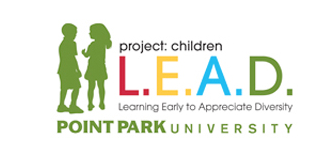Lesson 1: Kindergarten Families and Neighborhoods Lesson Series

Families and Neighborhoods
Created by: Shawnne Harris, Adam Popp, Mandi Ruggieri
Type of Lesson: Diversity Lesson
Grade Level: Kindergarten
Length of Lesson: 60 minutes
Group Size: 6 or more students
-
Objective
Following the lesson on Families and Neighborhoods, the students will be able to identify some of the people and objects from their neighborhoods, as well as be able to express the different activities they do with their families. The students will have a better understanding of the factors and people that make up a family and a community.
-
Pennsylvania Department of Education Indicators
9.1 Arts and Humanities
E) Themes in Art Forms
1.6 Reading, Writing, Spelling, and Listening
A) Listening in order to give, restate, and follow simple two step directions.
B) Listening to a selection and sharing on a specific type of experience.
1. Identify the characteristics of a similar experience.
D. Share information and ideas on a specific type of experience.
1. Respond to questions asked. -
Materials
Book "Families are Different" (1991) written by Nina Pellegrini. Precut felt shapes and letters Paper Dixie cups Glue Popsicle sticks Washable markers Poster Board Community stickers Crayons Name Tags
-
Adaptations and Accommodations
Students with vision problems will be able to sit near the front of the classroom near the board and the teachers.
-
Procedure
Review: (Approx. 5 - 7 minutes)
- The students will sit down in a semi circle in the front of the room on the carpet.
- Mr. Adam will introduce himself and the teachers and pass out name tags to the students.
- Mr. Adam will review the classroom rules with the students so they are aware that they apply with the student teachers as well as with Mrs. Vistein.
- Ask stimulating questions relating to the topic of family to start the discussion like: Who knows what a family is? and What do you do with your family? Etc
- Ask questions about neighborhoods. What is a neighborhood? and What types of people make up a neighborhood? ( an example would be a fireman or a police officer)
Introduce: (Approx. 5 - 7 minutes)
- Introduce the book "Families are Different" by Nina Pellegrini.
- Ms. Mandi and Mrs. Shawnne will read the book to the class and ask questions to the children that will make them think about things they do that relate to the book. (At this time, Mr. Adam will go to the art center to set up materials for the students in class project).
- We will encourage student participation by promptly responding to the questions and by asking questions if time permits.
- After the book has been read and following discussion, Ms. Mandi and Mrs. Shawnne will call on the children to go over to their assigned seats and get ready for the art project.
Develop: (Approx. 20 minutes)
- After the students have made the transition between the circle and to the art station, Mr. Adam will give directions on how to do the Community poster board.
- The Community poster board is the art project the students will participate in to help them formulate their own ideas about what a family and a neighborhood are and how they relate to each other.
- Mr. Adam will have the materials at the tables when the children go to their seats.
- He will enforce the rules again before the students begin their projects and explain the directions for it.
- The directions and process are as follows:
- The students will each get their own poster board and be given crayons, glue, stickers, and pre cut fabric to make their poster board. They will get to make a representation of what a community is to them, after learning and expressing ideas from the group discussion and the book that was read. This can include family, friends, different workers in the community, stop signs, traffic lights, parks, clubhouses, anything that means something to that individual child that might be in his or her community.
- The student teachers will closely monitor the children and make sure that they are doing the assignment correctly and safely. If they need help, a teacher will be there to give them ideas and assist them with their poster board.
- If help is needed, Mr. Keith volunteered to work with the children and clean up.
- When the students finish their art work, they will help clean up and be asked to go back to the circle with their drawings.
Assess: (Approx. 5 - 10 minutes)
The students will go back to the carpet in the front of the room after the project and tell everyone about their community. We will assess the children by seeing if they grasped the concept of families and neighborhoods by their project. If they included things that can be identified in a community, than we know they understood the lesson. We will also be able to informally assess the students by their class participation.
Assign: If the students are not able to complete their Community poster board project in the time allotted, they will be able to finish it during their free time if they would like or take it and do it at home.
Close: (Approx. 5 minutes)
Let the children formulate and express their ideas about what they included in their poster boards that are in a community (including family).
Reflect: The teachers will reflect on their lesson after it is done and the students from the Multicultural education class regroup in room 706 of the Academic Hall.
Reference:
Pellegrini,Nina. (1991). Families are Different. New York: Holiday House, Inc.

